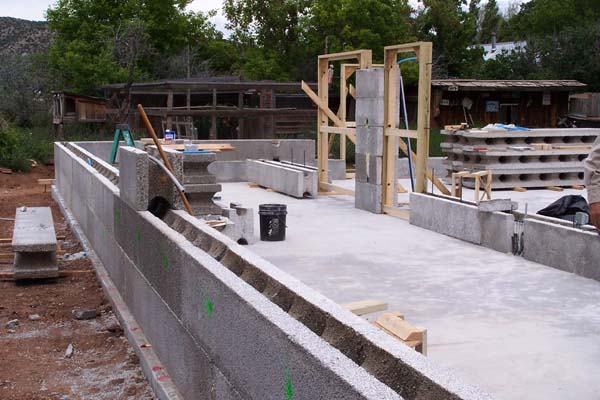Composite ICF block channels are seen in this view of the perimeter walls being raised-in the office of this large studio. You can see the horizontal channels as they line up as well as the vertical holes in each block in this early second course.
The walls will be raised to the proper height and the vertical and horizontal rebar pieces put in place ready to receive a concrete fill. Holes, roughly 4″ in diameter are drilled into the blocks at key points in all of the walls. This allows the cement pumper access to the inside channels of the blocks which will be filled during the final pour once all of the walls are in place. The pieces removed will be added back and held in place again with the non-expansive spray foam.
Due to the strength of the blocks after the cement pour filling the walls, a bond beam to hold and attach to the roofing structure is not required. The structural capacity of these walls, post pour, is strong enough to hold the entire weight of the roof. Saving the step of needing to add a bond beam of any kind, is just one of the cost and performance saving aspects of Rasta blocks in this particular build.
In the background of this photo can be seen 2 more doors which have been placed within the interior walls. Placing bolts which serve as pins into and through the rough buck frames is one way to secure the frame to the Rastra walls. In this regard the door and windows are handled in a similar manner to those in adobe construction and even cob construction. Simple pins from the rough framing which are then buried within the adjoining wall. Once the pour filling the walls has cured – the bolts from the door and window frame will be tightened well to hold each element in place secure and free of any possible movement.


